Estonia
Study in Estonia
Estonia is one of the most dynamic new EU member states, and a unique location between the East and the West. Due to its favourable location on the shore of the Baltic Sea, Estonia has often been regarded as a bridge between different countries and cultures. The country's complex history and successful transition from a communist past to democracy offers a unique perspective on the problems shaping the future of the region and the continent. Europe hottest start-up capitals:Tallinn (Wired magazine).As a result,Estonia has more successful start-up companies per head than in any other country in Europe, e.g. TransferWise, CrabCAD, Fortumo etc.We are talking about companies where even Sir Richard Branson invests. Home of Skype – the Skype software was developed by four Estonian engineers.Skype has an office in Tallinn, the capital of Estonia, and the company also provides scholarships for bright IT students who have chosen to study in Estonia. Ranked 1st worldwide in air quality (World Health Organization 2013).Estonia ranks 2nd in Internet freedom in the world (1st place Iceland, 3rd place Germany).Ranked 2nd in the world for Internet access in schools (1st Iceland,3rd Finland, The Global Information Technology Report 2013).Estonia is also the only Eurozone nation to run a budget surplus. Voted as best-performing economy in Europe.(www.europeanvoice.com)Has Europe's largest 4G coverage (95% of the country). Only Singapore and South Korea have managed to do the same.One of the safest countries in the world. Over 100 unique and high quality degree programmes,Internationally accepted diplomas,Various state scholarships,English language widely spoken,High level research projects,Active and fun student life,Working possibilities,The personal touch: small group sizes in classrooms,Great value for money
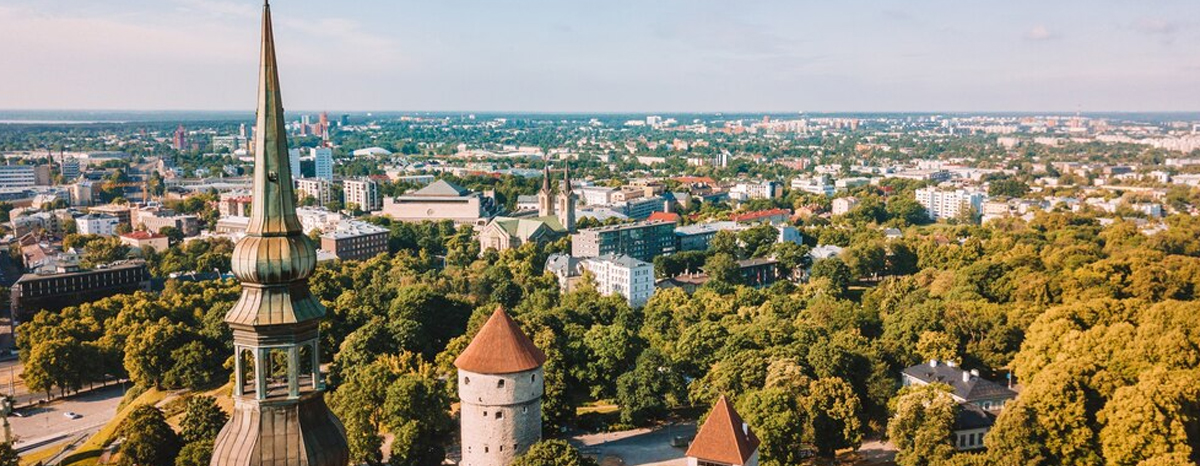
Top Universities in Estonia
-
Nord university

Nord University offers degrees at both undergraduate, postgraduate and doctoral levels across the fields of Professional Studies, Social Sciences, Business and Management and Natural Sciences. The university’s study programmes are supported by well-qualified staff and state-of-the-art learning facilities.
-
Tallinn health care college

Tallinn Health Care College is an internationally recognized state professional higher education institution offering training in the field of health and well-being.
-
Estonian University of Life Science

The Estonian University of Life Sciences is a public university located in Tartu, Estonia. Its roots trace back to 1802, when the Chair of Agriculture was founded in the University of Tartu. EMÜ is the 4th largest public university in Estonia.
-
Tallinn University of Technology

Established in 1918, Tallinn University of Technology is the only technical university in Estonia. TalTech, in the capital city of Tallinn, is a university for engineering, business, public administration and maritime affairs. TalTech has colleges in Tartu and Kohtla-Järve.
-
Tallinn University
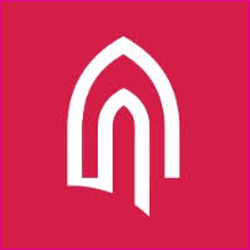
Tallinn University is a public research university in Estonia. Located in the centre of Tallinn, the capital city of Estonia, Tallinn University is one of the three largest institutions of higher education in the country.
-
University of Tartu

The University of Tartu is a public research university located in the city of Tartu, Estonia. It is the national university of Estonia. It also consists of the largest and oldest university in the country.
Country Facts
Estonia is the smallest of the three Baltic Countries. Situated on the north eastern coast of the Baltic Sea, Estonia borders with Latvia in the south and with the Russian Federation in the east and has strong cultural and linguistic ties with Finland. The capital of the country is Tallinn and is only about 85 km south of Helsinki, the capital of Finland. Sweden is Estonia’s nearest western neighbour across the Baltic Sea. The country has a population of about 1.4 million people.
Higher Education System
The history of formal education in Estonia dates back to the 13–14th centuries when the first monastic and cathedral schools were founded. The first primer in the Estonian language was published in 1575. The oldest university is the University of Tartu which was established by the Swedish king Gustav II Adolf in 1632. In 1919, university courses were first taught in the Estonian language.
Today’s education in Estonia is divided into general, vocational and hobby education. The education system is based on four levels which include the pre-school, basic, secondary and higher education.[1] A wide network of schools and supporting educational institutions has been established. The Estonian educational system consists of state, municipal, public and private educational institutions. There are currently 589 schools in Estonia.[2]
Academic higher education in Estonia is divided into three levels: bachelor’s studies, master’s studies, and doctoral studies. In some specialties (basic medical studies, veterinary, pharmacy, dentistry, architect-engineer and a classroom teacher program) the Bachelors and Master’s levels are integrated into one unit.[3] Estonian public universities have significantly more autonomy than applied higher education institutions. In addition to organizing the academic life of the university, universities can create new curricula, establish admission terms and conditions, approve the budget, approve the development plan, elect the rector and make restricted decisions in matters concerning assets.[4] Estonia has a moderate number of public and private universities. The largest public universities are Tartu University, Tallinn University of Technology, Tallinn University, Estonian University of Life Sciences, Estonian Academy of Arts, Estonian Academy of Music and Theatre and the largest private university is the International University of Audentes.
The Estonian Academy of Sciences is Estonia’s national academy of science. The IT industry of Estonia in late 1950s as the first computer centers were established in Tartu and Tallinn. Estonian specialists contributed in the development of software engineering standards for different ministries of the Soviet Union during the 1980s.
Test Requirements
General requirements
Over the past weeks, we have received quite many emails from students inquiring about the minimum English language requirement to study in Europe. If English is the language of instruction of the study program or course you will be studying in Europe, you will be required to prove you have a sufficient level of knowledge of English in order for your application to be accepted. However, what is the minimum English language requirement to study in Europe?
Although the expected level of command of English may vary depending on the school and, above all, the study program or course, the usual average English language requirement you will be required to have to study in Europe is 550 points (paper-based TOEFL test), or 213 points (computer-based TOEFL test), or 79-80 points (Internet-based TOEFL test), or 5.5 – 6.5 score in the IELTS test. If you have not taken either the TOEFL or IELTS tests and you would like to prove your level of knowledge of English with other exams, you will need to prove you have a level of command of English corresponding to the B1/B2 level (intermediate) according to the European language passport.
Please, be advised that the more competitive a course or study program is, the higher the level of knowledge of English will be.
What should you do if you don’t meet the minimum English language requirement?
You should always contact the course or program coordinator before you decide not to apply for it. In some cases, schools may be flexible with the language requirement and you may be allowed to improve your language skills while studying
Examinations
In addition to meeting the general eligibility requirements, Estonian higher education institutions may also organize specific exams to determine whether the candidate possess the adequate level of knowledge required to successfully complete the study program or course. For example, an institution may organize a test in mathematics for students applying for mathematical courses.At academies of art and design, candidates are usually requested to show a portfolio with the material created, which will be taken into consideration when evaluating the application for the study place requested.
Language requirements for studies at universities in Estonia
Estonian
The language of instruction at higher education in Estonia is the Estonian. However, most of Estonian universities and colleges offer study programs and courses in English or afford foreign students the opportunity to learn Estonian while studying their degree.
English
If English is not your first language, you are required to prove your level of command of the English language through the results you received from your studies at upper secondary school or through the results you received at the TOEFL or IELTS tests.
The levels of command of English vary depending on the study program or course you are enrolling in. Therefore, we recommend you check with your institution if your studies of English from upper secondary school are sufficient to meet the English language requirement or you need to take the TOEFL or IELTS tests.
Minimum grade point requirement to access undergraduate studies (first cycle) in Estonia
Admission to the majority of undergraduate studies (first cycle) in Estonia is subject to the fulfillment of a minimum grade point requirement. This is the grade point you receive after passing your upper secondary school studies in combination with the grades you receive at the university entry examinations in your home country. Therefore, always check with your Estonian university about the minimum grade point you need to obtain.
Accommodation
Accommodation
There are several options for arranging accommodation and these differ from one university to another as some universities provide student dormitories/hostels and some do not. Housing costs depend on the location, quality of the accommodation and on the season but the prices per month usually range from €80–150 in the dormitories to €200–510 in private flats.
Student Dormitories
Some universities have student dormitories with single, double and triple rooms. Most of the dormitories are newly renovated and in very good condition. The residential spaces in dormitories are usually apartment-type, consisting of two twin rooms; there is a kitchenette, shower and toilet (to share for maximum 4 persons).
Rent is calculated based on the number of tenants in the room and utility costs are added (heating, water and sewage, electricity). An average monthly fee (including utility costs) for a student living in a dormitory is around €100. It is sometimes also possible to rent a twin room for single use. In this case, all the expenses are doubled.
Rooms in dormitories are usually equipped with all basic furniture items – each resident has his or her own bed, desk, chair and shelves. Kitchens are equipped with a cooker, refrigerator, running water and basic kitchen furniture. The rest – curtains, carpets, blankets, pillows, cleaning equipment, dishes, water boilers, toasters etc. – is up to the student. Before you buy anything major, however, it may be sensible first to meet with your roommates/flatmates and see what is there already, decide how you are going to use it, and only then, if and as you agree, start purchasing new items.
Private Housing
Private rooms or flats can be found through newspaper advertisements, websites or real estate agencies operating in the city. However, the best flats are most often found via local acquaintances and friends. The International Relations Office/Admission Office can assist you in finding accommodation or recommending another university employee or student who could help arrange housing. You should be careful and look for an apartment with the help of Estonian tutors, students, friends or professors – like any place else, rents might be typically inflated for foreigners in Estonia.
It is common for international students to share bigger flats in the city centre. Rental prices in the centre may be a bit more expensive but one can cut costs and time on transportation. Splitting the rent among friends may offer an opportunity to find great accommodation at an affordable price.
Prices can vary widely depending on the number of rooms and facilities offered. On closing a rental deal, be prepared to pay a deposit. Generally the deposit is the equivalent of three months’ rent; one month’s rent will be returned to you upon your departure, provided that the accommodation is left in acceptable condition.
Scholarship
Since January 1, 2005 the Archimedes Foundation is responsible for technical coordination of scholarships/internships offered to Estonian students and researchers by our foreign partners and for scholarships offered by the Estonian Ministry of Education and Research to foreign students and researchers.
Archimedes Foundation participates in the selection process of the candidates, distributes information about scholarship and placement opportunities to Estonian and foreign students, provides consultations for all interested parties and organizes communication between Estonian and foreign institutions.
For more up to date information about scholarship in Estonia, please contact us.
History
The history of Estonia is a part of the history of Europe. Estonia was settled near the end of the last glacial era, beginning from around 8500 BC. Before the Germans invaded in the 13th century proto-Estonians of the Ancient Estonia worshipped the spirits of nature.[citation needed] Starting with the Northern Crusades Estonia became a battleground for centuries where Denmark, Germany, Russia, Sweden and Poland fought their many wars over controlling the important geographical position of the country as a gateway between East and West.[1]
Being conquered by Danes and Germans in 1227, Estonia was ruled initially by Denmark in the north, by the Livonian Order, an autonomous part of the Monastic state of the Teutonic Knights and Baltic German ecclesiastical states of the Holy Roman Empire. From 1418–1562 the whole of Estonia was part of the Livonian Confederation. After the Livonian War, Estonia became part of Sweden from the 16th century to 1710/1721, when it was ceded to the Russian Empire as the result of the Great Northern War. Throughout this period the Baltic German nobility enjoyed autonomy, where the language of administration and education was German.
The Estophile Enlightenment Period 1750–1840 led to the Estonian national awakening in the middle of the 19th century. In the aftermath of World War I and the Russian revolutions, the Estonian Declaration of Independence was issued in February 1918. The Estonian War of Independence ensued on two fronts between the newly proclaimed state and Bolshevist Russia to the east and the Baltic German forces (the Baltische Landeswehr) to the south, resulting in the Tartu Peace Treaty recognising Estonian independence in perpetuity.
In 1940, Estonia was occupied and (according to e.g. the USA,[2] the EU,[3] and the European Court of Human Rights) illegally annexed by the Soviet Union as a result of the Molotov–Ribbentrop Pact. During the war Estonia was occupied by Nazi Germany in 1941, then reoccupied by the Soviet Union in 1944. Estonia regained independence in 1991 after the collapse of the USSR and joined the European Union in 2004.
Culture
Due to its history and geography,Estonia culture has been influenced by the traditions of the adjacent area various Finnic, Baltic,Slavic and Germanic peoples,as well as by cultural developments in the former dominant powers,Sweden and Russia.
The culture of Estonia combines an indigenous heritage, represented by the country Uralic national language Estonian, with Nordic cultural aspects.Due to its history and geography, Estonia culture has been influenced by the traditions of the adjacent area various Finnic, Baltic, Slavic and Germanic peoples,as well as by cultural developments in the former dominant powers,Sweden and Russia.Traditionally,Estonia has been seen as an area of rivalry between western and eastern Europe on many levels.An example of this geopolitical legacy is an exceptional combination of multiple nationally-recognized Christian traditions: Western Christianity (Catholic, Protestant) and Eastern Christianity (Orthodox Church). The symbolism of the border or meeting of east and west in Estonia is well illustrated on the reverse side of the 5 krooni note.Like the mainstream cultures in the other Nordic countries,Estonian culture can be seen to build upon ascetic environmental realities and traditional livelihoods,a heritage of comparatively widespread egalitarianism arising out of practical reasons (see: Everyman right and universal suffrage),and the ideals of closeness to nature and self-sufficiency.
Literature of Estonia
Though the written Estonian language could be said to have existed since Jacob Johann Köhler translated the New Testament into Estonian in the 18th century, few notable works of literature were written until the 19th century,which saw the beginning of an Estonian national romantic movement.This prompted Friedrich Robert Faehlmann to collect Estonian folk poetry,and Friedrich Reinhold Kreutzwald to arrange and publish them as Kalevipoeg,the Estonian national epic. That era also saw the rise of other poets and novelists who wrote in Estonian,notably Lydia Koidula.
After Estonia became independent, there was a movement of modernist writers,most famously Jaan Kross.The Second World War prompted a repression of national interests.Literature in modern Estonia is in a healthy state,with detective stories in particular enjoying a boom in popularity.
Music
Despite its relatively short history of art music,Estonia today is well respected for its musicianship,with the quality education of classical musicians having produced a high proportion of world-class conductors and singers.Estonian art music came to the forefront as a part of the national Romantic Movement.
Modern Estonian popular music has also received attention abroad, especially on the rock and metal scenes,with bands such as Vanilla Ninja and Metsatöll, Kerli and composers as Arvo Pärt, gaining international acclaim.
Visual arts
The Art Museum of Estonia is the main national museum of visual arts, and has a large collection of Estonian art on permanent display. It was founded on November 17, 1919, but it was not until 1921 that it got its first permanent building – the Kadriorg Palace, built in the 18th century. Today the palace is used to display foreign art while a new purpose-built museum houses the main branch of the museum, called Kumu.Some of the more famous Estonian painters include Johann Köler, Ants Laikmaa, Paul and Kristjan Raud and Konrad Mägi.
Architecture
The architectural history of Estonia mainly reflects its contemporary development in northern Europe. Worth mentioning is especially the architectural ensemble that makes out the medieval old town of Tallinn, which is on the UNESCO World Heritage List. In addition, the country has several unique, more or less preserved hill forts dating from pre-Christian times, a large number of still intact medieval castles and churches, while the countryside is still shaped by the presence of a vast number of manor houses from earlier centuries.
Cost of Living
Living costs in Estonia are affordable and are considered to be lower than in most other European countries.General feedback from foreigners who have spent some time here is that living conditions are similar to those in Western Europe. Cost of living in Estonia is usually dependent upon the student accommodation choices, lifestyle, and spending patterns.
Accommodation
Student accommodation prices in Estonia start from €100 per month in student dormitories. Some universities have student dormitories with single, double and triple rooms. Housing costs largely depend on the location and size of the flat. On average, the prices range from about €100 for a place in a double room in the residence hall to €180–€450 or more for a private flat.
Food
Students can usually enjoy a comfortable life with around €200–250 per month for food.Each student can determine food expenses individually,depending on their needs.Every university also has its own cafeteria(s),which offers nice meal with reasonable price.
Transport
Public transport is available for all students and is free of charge in Tallinn (only for residents of Tallinn,including international students studying in Tallinn).Local public transport in Tartu:€8.63 with a monthly ticket (with student card),single ticket for a student €0.51 (€1 on the bus).Most universities have everything needed (supermarkets, cafes, shops, pharmacy, gym etc.)located within a short walking distance.
Health and Medical System
It is always advisable to take medical insurance before travelling abroad so speak to your travel agent or insurance provider about that.If you take, or are likely to require,medication regularly then it is also advisable to carry a letter from doctor explaining your needs.Pharmacies are well stocked with basic and prescription medicines but note that some medicines that are available in stores and supermarkets in other countries-such as Aspirin and various ointments – are only available in pharmacies in Estonia.Herbal remedies and other organic products are also available in some supermarkets and nature shops.Estonia medical services are as good as,if not better,than those in most other EU countries.After independence,we were able to combine the Soviet idea of free care for all with Western standards of knowledge and hygiene. We can now be proud of our national health service.There are also private clinics.
In case you need health care while staying in Estonia (for EU citizens):All insured people have a family practitioner,who is the first contact point in case of illness.The family practitioner treats minor illnesses,can make home visits and gives referrals to visit a medical specialist.No referral is needed to visit a psychiatrist, gynaecologist, dermatovenerologist,ophthalmologist,dentist,pulmonologist (for tuberculosis treatment),infection specialist(for HIV/AIDS treatment),surgeon or orthopaedist (for traumatology).
For more information on family practitioners, see the website of Estonian Health Insurance Fund. The list of family practitioners in Tartu is available on the city of Tartu website (in Estonian).As the information is in Estonia,ask your tutor help when choosing and signing up with a family practitioner.In case the doctor does not speak English,you could also try asking your tutor to come with you to the appointment.Do not forget to take your EHIC or private health insurance documents with you. Specialised medical care
All visits to medical specialists are organized via the family practitioner except for specialists listed on p. 3. International students are advised to consult the family practitioner when choosing a particular medical specialist.Visit fee for a medical specialist is up to 5 EUR. However,some appointment times are outside the insurance scheme and then the visit fee may be much higher.It is advisable to ask about the visit fee when making the appointment.Medical specialist may find that you need hospitalization. If you are insured,in-patient fee of up to 2.50 EUR per day is charged for up to 10 days per hospitalization.
In most cases,you should only pay the visit fee and the doctor will send invoices for the rest of the costs directly to your insurance provider.If the doctor you visit does not have a contract with the insurance provider for the compensation of cost, you must pay the full cost of the health service yourself.In that case,keep all the cost documents and referrals and apply for compensation from your insurance provider.If you have any problems using your (private) health insurance in Estonia,you can ask for information and advice from your insurance provider or the Estonian Health Insurance Fund by calling their information line 16363.
Dentists
For adults, dental care is not free of charge.Usual visit may cost from 10 EUR upwards depending on the problem. There are many dental care providers in Tartu, the most central one is the Stomatology Clinic of Tartu University (Town Hall Square 6, 2nd floor,tel. 731 9100).You can find information on dental care providers on the city of Tartu website (it is in Estonian, so please ask further assistance from your tutor).
Pharmacies
The most central pharmacy is Tartu Raeapteek in the town hall building (at Town Hall Square), open 24 hours.However, there are many pharmacies all around the city (also in each shopping center in city center).
Transportation
National Roads
National roads form the core of Estonian road network.Their total length is 16,465 km (or 29% of all roads),59% of them are paved.[1] They are divided into 3 classes according to importance:
MainRoads (1,601 km)
Basic Roads (2,391 km)
Secondary Roads (12,425 km)
Electric Vehicle Network
Estonia is the first country in the EU and in the world to introduce a nation-wide, publicly serviced charging system for charging the batteries of electric vehicles. [2] The 165 fast charging stations are equipped with connectors of the CHAdeMO standard. They are located throughout the entire country, including the islands, and have a maximum distance of 40–60 km in between. The charging stations can also be navigated via a smartphone app (currently only for Android).The relatively dense network and 30 minute quick charges are built to enable a country-wide electric vehicle network.The system offers a unitary booking service and several different tariffs,some of which appear attractively low priced.[3] The charging station network puts Estonia at the forefront in Europe even though Norway actually has a higher penetration of electric vehicles. Estonia has a rate of 1 electric vehicle per 1000 capita, whereas Norway has 4 EVs per 1000 capita. [2]
Light Rail
Here has been a growing tram network in Tallinn, Estonia since 1888, when traffic was started by horse-powered trams.The first line was electrified on October 28, 1925. The first electric trams were built by Dvigatel,Ltd.,in Tallinn before World War II and for some years after that,the last one in 1954.In the 1920s and 1930s gas-powered trams were also used. Since 1955 to 1988 German-built trams were used.In total,there were 20 LOWA T54-B54 trams (in use from February 1955 to March 1977), 11 Gotha T57-B57 (in use from January 1958 to June 1978),5 Gotha T59E-B59E (in use from June 1960 to February 1980),14 Gotha T2-62 and B2-62 (in use from 1962 to 1981) and 50 Gotha G4 trams (in use from January 1965 to October 1988) trams.The first Czechoslovakian-built ČKD Tatra T4SU arrived in 1973. The T4SU trams were in use from May 1973 to September 2005 and there were 60 of them. The first KT4SU arrived in Tallinn in 1981 and was first in use on March 10, 1981. In 2007,there are 56 KT4SU,12 KTNF6 (rebuilt KT4SUs, 10 local,one from Gera and one from Erfurt) and 23 KT4D (12 from Gera, 6 from Cottbus,1 from Frankfurt (Oder) and 5 from Erfurt) in use.As of 2007, there are four lines: 1 (Kopli-Kadriorg),2 (Kopli-Ülemiste),3 (Tondi-Kadriorg) and 4 (Tondi-Ülemiste).There have also been lines 5 (Kopli-Vana-Lõuna,shut down in 2004 because of small usage) and 6 (Kopli-Tondi,temporarily used in time of repairs
Under Graduate Degree
A Bachelor degree in Estonia is usually an undergraduate academic degree.It is the first step of your higher education at university or college and will last three or four years in most cases.For some courses and in some countries,a bachelor degree may however take up to six years to complete.If you have just graduated from your secondary education,you will in most cases be eligible to start your bachelor education at a university,college or other qualified institution.
Undergraduate Education
Undergraduate Education is the post-secondary education previous to the postgraduate education.It includes all the academic programs up to the level of a bachelor degree. For example,in the United States an entry level university student is known as an undergraduate, while students of higher degrees are known as graduates.In some other educational systems and subjects,undergraduate education is post-secondary education up to the level of a master degree;this is the case for some science courses in Britain and some medicine co Undergraduate or 1st Cycle Studies.First-cycle studies leading to the professional title of a Bachelors.Bachelor degree programmes,at least 6 semesters,leading to the professional title of Bachelor or at least 7 semesters.This is the Polish equivalent of the Bachelor degree.These are focused on preparing students for future employment,or for continued education within Master degree programmes.To obtain this degree,students must earn at least 180 ECTS credits.The duration of this course is 3 to 4 Years.
Post Graduate Degree
Master studies (second cycle)
If you are applying for a master program at university in Estonia, you are required to be in possession of a relevant bachelor or equivalent degree diploma.
Doctoral studies (third cycle)
In the event you are applying for doctoral studies at university in Estonia,you are required to be in possession of a relevant diploma or master degree program.
Examinations
In addition to meeting the general eligibility requirements,Estonian higher education institutions may also organize specific exams to determine whether the candidate possess the adequate level of knowledge required to successfully complete the study program or course.For example,an institution may organize a test in mathematics for students applying for mathematical courses.
At academies of art and design,candidates are usually requested to show a portfolio with the material created,which will be taken into consideration when evaluating the application for the study place requested.
The language of instruction at higher education in Estonia is the Estonian.However,most of Estonian universities and colleges offer study programs and courses in English or afford foreign students the opportunity to learn Estonian while studying their degree.
Jobs
International students in Estonia do not need an additional working permit to work while studying full time and they are allowed to work on the condition that it does not interfere with their studies.Students have to receive passing grades for a full load of courses and finish studies within the nominal time.All non-EU students can also stay to Estonia for additional 6 months after their graduation (with the permission of the university) to look for a job in Estonia.Upon finding a job after graduation, they can use this time to apply for a temporary residence permit for work.
Average monthly salary in Estonia:
€966 gross per month (1st quarter of 2014) for a full time job
€6.02 gross per hour (1st quarter of 2014) for a full time job
Minimum salary: €355 per month gross (2014)
Working hours for international students: not limited
How to find a job?
In Estonia, it is usual to send an e-mail a potential employer;phone calls may work but are not normally preferred. You should send a CV, and a motivational letter and expected wage is often requested. Be ready for an interview.Most Estonian students work and study at the same time. Having a full time or part-time job is very common.
Places where you can look for job vacancies:
Career centres and info desks in universities
Websites
Friends, classmates and local students
Direct contact with someone from the company, which can be made from the company website
Your position is different from that of Estonian students and you will have to take several practical restrictions into account,such as your probable lack of fluency in the Estonian language.It goes without saying that if you are enrolled in an English language programme and have not had to learn any Estonian, certain jobs will be out of your reach but there are certainly options for international students as well.
Career services
Most of Estonian universities also offer various career and counselling services to their international students.Services usually provided:
Career and psychological counseling
Information about job vacancies and internship opportunities
Help with composing correct documents when applying for a job
Help with preparing for a job interview
Join career mailing list and jobseekers database
Seminars and lectures on career issues
Organizing presentations of companies and organizations to students
Information services
Conducting career-related surveys
Rules and regulations
Agreements with an employer
Before you start a job, it is wise to settle all the formalities with your employer,such as working contract,the number of holiday days you are entitled to, your insurance coverage and your tax situation.Also make sure you know the organization internal rules and regulations regarding the terms of employment.
Balance with studies
In order to be allowed to work and study at the same time, the student is required to study full-time. Full-time means that student must successfully obtain around 30 ECTS credit points each semester.The exact amount of required credit points may differ for semester. Therefore, you will need to find the right balance between work and studies.If the student wishes, they can also work full time, however, it is quite difficult to manage a full time job and full time studies at the same time.
Legal work contracts
Some students take jobs in, for example,cafes and restaurants through unofficial channels where the employer does not pay any social security contributions for them. The pay for such jobs is usually higher than for regular jobs,but it is important to realize that this practice (called working in the black) is illegal,and means that you cannot claim any rights as an employee.Moreover,you will not be insured in the event of a work-related accident.You should also be aware that if you and the employer avoid rules and regulations,they risk a high fine in the event of discovery.
Hours of work
Full working time for an adult in one week is 8 hours a day (40 hours a week). Part-time working time is a working time period that is shorter than full-time working time and is implemented upon the agreement of the employee and the employer. Regular daily, weekly or monthly working time of part-time employees (except trainees) is half a day or other agreed upon time during normal work hours.
Working after graduation in Estonia
All non-EU students can stay in Estonia for an additional 6 months after their graduation to look for a job in Estonia and apply for a temporary residence permit for work. In order to apply for the required permit,it is first necessary to find a suitable job. Processing the work permit application takes about a month. Additional information concerning work permits (that are obligatory after graduating your studies and finding a job in Estonia) can be obtained from the Citizenship and Migration Bureau.
Starting from 1 September 2013, all international graduates who have obtained a bachelor, master or PhD degree in Estonia can apply for a temporary residence permit for work under special conditions. This means that their employers do not have to follow strict payment/fee requirement (obligatory for other international temporary residence for work applicants) and these employers are not obliged to have the permission of Eesti Töötukassa (Estonian Unemployment Insurance Fund) for employing Estonian university graduates of a foreign nationality.
Cities
Tallinn
Tallinn is the capital city of Estonia and an ideal holiday destination if you want to combine the comforts of modern world,versatile nightlife and luxurious adventures with rich cultural scene in the local historical setting.
Tartu & Tartu University.The university city of Tartu sits on the Emajõgi river.
Tallinn occupies an area of 159.2 km2 (61.5 sq mi) and has a population of 431,184.[2] It is situated on the northern coast of the country, on the shore of the Gulf of Finland,80 km (50 mi) south of Helsinki,east of Stockholm and west of Saint Petersburg.Tallinn Old Town is listed as a UNESCO World Heritage Sites.[5] It is ranked as a global city and has been listed among the top 10 digital cities in the world.[6] The city was a European Capital of Culture for 2011,along with Turku in Finland.
The city was known as Reval from the 13th century until 1917[7] and again during the Nazi occupation of Estonia from 1941 to 1944.
332.7% of Estonia total population lives in Tallinn.Tartu is the second largest city of Estonia,following Estonia political and financial capital Tallinn, Tartu is often considered the intellectual centre of the country, especially since it is home to the nation oldest and most renowned university,the University of Tartu.The city also houses the Supreme Court of Estonia and the Ministry of Education and Research.Situated 186 kilometres (116 miles) southeast of Tallinn, Tartu is the centre of southern Estonia and lies on the Emajogi (Mother river), which connects the two largest lakes of Estonia.The city is served by Tartu Airport.
The ancient Estonian fortress of Tarbatu[2] was founded in the 5th century AD.[3] Historical names for the city include German Dorpat (from the 13th century) and Russian Yuryev (Юрьев, from 1030) and Derpt (Дерпт) Narva (Russian: Нарва) is the third largest city in Estonia.It is located at the eastern extreme point of Estonia, by the Russian border, on the Narva River which drains Lake Peipus.
Narva
Narva (Russian: Нарва) is the third largest city in Estonia.It is located at the eastern extreme point of Estonia, by the Russian border,on the Narva River which drains Lake Peipus.
Parnu
Parnu (German: Pernau, Russian: Пярну, Polish: Parnawa, Latvian: Pērnava) is a city in southwestern Estonia on the coast of Parnu Bay,an inlet of the Gulf of Riga in the Baltic Sea.It is a popular summer vacation resort with many hotels, restaurants,and large beaches.The Pärnu River flows through the city and drains into the Gulf of Riga.The city is served by Parnu Airport.
The city is occasionally referred to as Pyarnu, an incorrect reverse-transliteration from Russian Пярну.
Kohtla-Jarve
Kohtla-Järve (Russian: Кохтла-Ярве) is a city and municipality in north-eastern Estonia,founded in 1924 and incorporated as a town in 1946.The city is highly industrial, and is both a processor of oil shales and is a large producer of various petroleum products.The city is also very diverse ethnically: it contains people of over 40 ethnic groups[2] Only 21% of the population are ethnic Estonians; most of the rest are Russians. Kohtla-Jarve is the fifth-largest city in Estonia.
Kohtla-Jarve is unusual among municipalities of Estonia due to having a discontiguous territory. The two main parts of the city, Jarve (Kohtla-Jarve proper) and Ahtme, both with populations around 20,000, are located about 10 km apart. Several other settlements in north-eastern Ida-Viru county,connected to oil shale mining, are administered as districts of Kohtla-Jarve;the furthest, Sirgala, is 40 km east of Jarve.In the Soviet time, the towns of Jahvi, Kivioli, Pussi and Kohtla-Nomme were also incorporated into Kohtla-Järve.
Work Permit
Foreign nationals living in Estonia according to a residence permit are usually allowed to work in Estonian without an additional work permit.Since 01.09.2013 separate work permits are not issued.The right to work is set in the Aliens Act.
NB!Foreign nationals who are given extensions of residence permit in existence of legal income are not allowed to work in Estonia.
Working without a residence permit
Short-term employment in Estonia is allowed for up to 6 months in a year.A foreign national can work short-term in Estonia if he arrives to or stays in Estonian under a visa or a visa waiver program and:
The employment is registered with a prefecture of the Citizenship and Migration Department of the Police and Border Guard Board. Registration of short-term employment in Estonia can be applied for by the employer or;
A managing or supervising role as a member of management body of a legal entity registered in Estonia is carried.
European Union Citizen Right To Work
A citizen of the European Union,a member state of the European Union Economic Area and Swiss Confederation (hereinafter an EU citizen) has a right to stay in Estonia on the basis of a valid travel document or an identity card for the period of up to three months without registration of the right of residence.EU citizen family members can work in Estonian only in case they have the right of residence (either temporary or long-term).
Bank Money and Taxes
Banking system
The Bank of Estonia (Eesti Pank) is the independent central bank.As Estonia is part of the Euro zone,the core tasks of the Bank are to help to define the monetary policy of the European Community and to implement the monetary policy of the European Central Bank.Eesti Pank is also responsible for holding and managing Estonian official foreign exchange reserves as well as supervising overall financial stability and maintaining reliable and well-functioning payment systems.Eesti Pank is responsible for the circulation of cash in Estonia.
Since Estonia regained independence,the developments in the banking sector have been rapid,along with the trend of welcoming foreign capital.The banking sector has gone through major restructuring as a result of privatization, consolidation and bankruptcy in late 1990s,following a relatively stable period in the 2000s.
The banking sector is dominated by two major commercial banks, Swedbank and SEB, owned by Swedish banking groups. These two banks control approximately 62% of the financial services market.The third largest bank is an affiliate of the Finnish Nordea group and the fourth largest bank is an affiliate of the Finnish Nordea Group and the fourth largest bank is an affiliate of the Danish Danske Bank.There are no state-owned commercial banks or other credit institutions.
Specialized financial institutions
Estonian commercial banks are the largest providers of leasing and factoring services, with the Swedbank group being a definite market leader.The services provided are becoming more sophisticated and diverse while the clients are also becoming more aware of the services on offer.The sector has been growing extensively as a result of the decline in interest rates and the increase in customers welfare. The range of potential leasing objects has grown to include anything from bikes,home furniture and travelling arrangements up to real estate,personal vehicles,trucks and farming equipment.
The factoring services include domestic factoring,export factoring,invoice factoring as well as tax factoring.There are also options to finance VAT returns. For international companies, the available factoring services include the handling of the entire accounts receivable portfolio of local companies.
The Estonian insurance market has similarly gone through a major consolidation over the years since independence and has reached stability. A wide choice of insurance services is available from Estonian insurance companies as well as from international service providers.
Tax System and Administration
Main principles of Estonian tax policy: simple tax system, broad tax base and low rates.
The aim of the Estonian Government is to shift the tax burden from labor to consumption.
Flat income tax rate since 1994 (flat income tax rate at 21% applies to both individuals and companies).
Unique corporate tax system since 2000: all undistributed corporate profits are tax-exempt.
Local taxes play an insignificant role in the Estonian tax system.
Estonia operates a self-assessment system.
The Government intention is to improve tax administration (electronic tax administration is well established).
Administration Of The Tax System
Taxes are levied on the basis of tax laws enacted by Parliament. Both state and local taxes are imposed under the taxation laws. The structure and basis of the tax system is regulated by the Law on Taxation. Local taxes are introduced by local municipal councils according to the Law on Local Taxes. Local taxes play an insignificant role in the Estonian tax system.
The tax administrator is the Estonian Tax and Customs Board. Local taxes are administrated by the local municipal councils and local offices of the Tax Board.
The allocation of state taxes between national and local governments is set out by the tax legislation. The Income Tax Law states that 11.6% of resident individuals income tax before deductions is allocated to local municipalities, but the rest, including all taxes levied from pensions and capital gains, is allocated to the state budget.
Classes of Taxpayers
Estonian taxpayers are resident and non-resident legal entities and individuals. The term legal entity includes companies, partnerships,legal entities under public law and non-profit organizations and foundations.
A legal entity is treated as resident in Estonia if it is founded under Estonian laws. An Estonian branch of a foreign company is treated as a permanent establishment of a non-resident entity. An individual is treated as resident in Estonia if he has a permanent place of residence in Estonia, is present in the country for 183 days or more during any 12-month period, or if a person is employed in the public state service of Estonia, dispatched abroad.Non-resident taxpayers include foreign entities and individuals, or their permanent establishments in Estonia
Registration Requirements
Taxpayers that are based in Estonia and are registered in the Estonian Commercial Register (subsidiaries, branches etc.) will be automatically recorded into the taxpayers register that is held by Estonian Tax and Customs Authorities. A separate registration is required for VAT purposes.Foreign companies can only register with the Tax and Customs Authorities in certain circumstances (e.g. acting as a foreign employer, having a permanent establishment and as a VAT liable person).
Money and Currency in Estonia
Estonia joined the EURO-zone in the beginning of 2011 – and now, EURO is the official currency.
The value of the Estonian Kroon (eek) was fixed to the €. The smaller unit was called the Cent, 1 kroon = 100 cents. 1 EUR = 15,65 kroons(EEK).
On the 1st of January 2011, Estonia joined the euro-zone and switched the Estonian Kroons to euros. During the adoption phase, shops (and other establishments) displayed the prices both in kroons as well as euros and it still may be the case in some shops. Seeing two currencies on a price tag may feel just a tiny bit confusing, but the only official currency in Estonia is euro and hopefully, all of the price tags will be updated soon.
Changing money in Estonia is easy at the many ATMs, banks, hotels and bureaux de change that offer currency exchange services.Credit cards such as Visa and Mastercard/Eurocard etc. are accepted in most of the major hotels, restaurants and shops. Use of American Express is not as common. Whether you are on a tight budget or looking for luxury Estonia has something for you. However much you have to spend Estonia offers great value for money compared to most European countries and we have plenty of surprises to tempt you.
- UK

- USA

- Canada

- Australia

- New Zealand

- Germany

- France
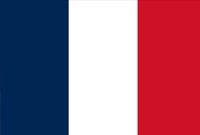
- Italy

- Sweden

- Finland
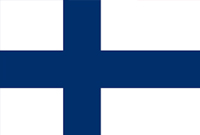
- Georgia
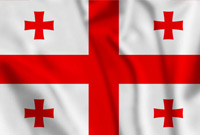
- Austria

- Slovenia

- Spain

- Belgium

- Bulgaria

- Czech Republic

- Croatia

- Denmark

- Estonia

- Greece

- Hungary

- Iceland

- Latvia

- Liechtenstein
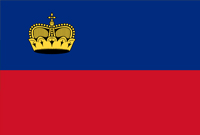
- Lithuania

- Luxembourg
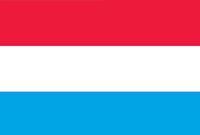
- Malta

- Netherland

- Norway

- Poland

- Portugal

- Romania
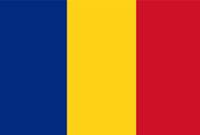
- Slovakia

- Switzerland

- Serbia
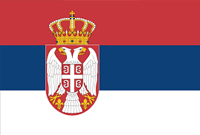
- Ireland
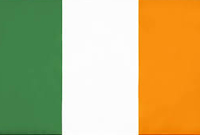
- Albania

- Moldova
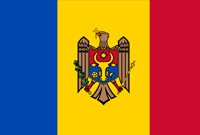
- Ukraine

- Belarus

- Russia

- Cyprus

- Monaco

- Bosnia

- Andorra

- Montenegro

- More Contries

Why Choose Us?

Supportive Environment

Student-Friendly Policies

Quality Higher Educations

Opportunities for Growth
Do you have questions or want more information?

